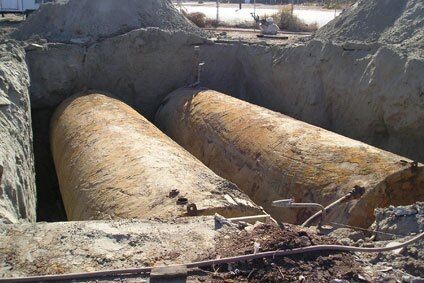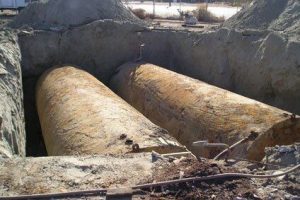
When You Find Out Your Property Isn’t As Clean As You Thought It Was…
It is always good business practice to know more about the building you are selling than a prospective Buyer.
If you’re getting the tough news after the fact, then moving forward is usually going to be more challenging.
It’s going to take longer.
And you’ll likely be limited in your options.
Because unlocked (and maximized) value really goes to the person who is best prepared.
So if you offer your property for sale without conducting an up to date Environmental Assessment beforehand…
And you leave it up to the Buyer to do that, then the Buyer:
- Will know more about your own property than you, and
- At the end of the Due Diligence period, the Buyer will have more perceived control if something is not right…
Meaning they will be in a power position to negotiate the final deal, instead of yourself, the Seller.
In addition, if the final outcome is not 100% perfect – i.e. if such Environmental Assessment uncovers a certain level of contamination that needs to be remedied (which could be done in advance, or at least quantified in terms of cost of hiring a professional remediation company)…
- Then, not only will you lose your leverage, but:you may have trouble getting financing from banks,
- you will lose 45 days (or more) to the Due Diligence process,
- you will lose a further 90+ days in remediation, and
- you will lose momentum in the marketing and sale of the asset.
Lastly, in some cases, many Buyers simply walk away at the first signs of ‘contamination,’ which may possibly create a stigma around the site moving forward.
So, in conclusion, you cannot let the Buyer do the Due Diligence for you – unless you’re willing to risk time, leverage, positioning, opportunity cost, and the reputation of the property.
Then, you may ask yourself, how does one recover from this?
Well, in this article, we will outline the steps you can take to move forward and regain leverage as an owner – using a real-life case study.
We are into the fourth issue of our series on Due Diligence, where we are diving into the different types of due diligence, case studies of successful assessment and remediation, and what exactly to look out for when preparing your property for sale.
Today we will examine our first case study. So let’s begin…
100,000 SF Industrial Building, Vaughan, Ontario
Project Overview
Cushman & Wakefield’s Team of Goran Brelih & Diana McKennon were mandated by the property owner to assist in the disposition of their 100,000 SF building.
We recommended that the Seller undertake Phase I and Phase II (if required) Environmental assessment to identify potential environmental concerns associated with current and historical activities at the site and surrounding properties.
The Phase I Environmental Site Assessment (ESA) uncovered potential on-site sources of contaminants, being two spill containment underground storage tanks (USTs), one appeared to be a steel tank of unknown capacity, the second appeared to be a concrete tank of also of an unknown capacity.
Two flammable storage rooms associated with the spill containment UST tanks with floor drains that empty into the spill containment USTs were also observed.
In addition, hazardous waste storage areas on the site were noted. As a result of these findings, a Phase II ESA was performed. The Phase II ESA was designed to investigate contaminants of concern in both soil and groundwater, including Petroleum Hydrocarbon fractions F1-F4 (PHCs (F1-F4)), Volatile Organic Compounds (VOCs), Metals and Inorganics.
The Phase II ESA included groundwater monitoring wells placed around the property and the collection of soil samples.
The samples collected were analyzed and findings confirmed that soil and groundwater samples detected exceedances of VOCs and PHC including:
- dichloroethane and trichloroethene (TCE), ethylbenzene, toluene, xylene and PHC at concentrations greater than the applicable MOEE standards within the soil and the groundwater at the site (likely associated with leaky storage tanks systems and possibly the application of salt for de-icing of the parking lot).
Based on the findings of Phase II, Environmental engineers suggested the removal of both USTs and the removal of the impacted soil. Groundwater remediation was not recommended as with the source being removed the groundwater condition should naturally attenuate.
Conclusion:
Based on the initial remediation strategy program the Vendor completed the following:
- Two UST tanks and associated impacted soil was removed from the west and the east side of the site,
- Analytical results indicated soil conditions comply with Table 3 SCS at the west excavation,
- Analytical results indicated elevated concentrations of dichloroethane and trichloroethene (TCE) remain in soil at the east excavation,
- A total of 26 soil samples were submitted to the lab to verify the remedial efforts, and
- Approximately 1370 tonnes of impacted soil was removed from the site.
Subject to the above, additional remedial efforts were warranted at the east excavation to achieve compliance with the Table 3 SCS.
However, given the depth of the noted impacts, location and low concentrations detected, it was cost prohibitive to conduct excavation and haulage of the impacted soil. Accordingly, Insitu remediation was recommended.
Final Outcome:
As part of the final negotiations in this transaction, the Purchaser agreed to take over the final stage of the remediation process, including air and soil vapor sampling, interior and exterior remediation, risk assessment study, verification sampling and a closure report (cost of $190,000.00) in lieu of a price adjustment.
The following clause was inserted to the Agreement of Purchase and Sale:
“The Purchaser agrees that it will undertake to complete all of the environmental work described in the attached Exhibit I to a reasonably prudent standard (the “Work”). The Purchaser hereby indemnifies and saves harmless the Vendor and those parties for whom the Vendor is responsible, from any and all manner of actions, demands, suits, and liabilities whatsoever arising out of, and/or related to the Vendor’s failure to abide by its undertaking to complete the Work. The Purchaser hereby irrevocably releases, remises and forever discharges the Vendor and those parties for whom the Vendor is responsible from any and all manner of actions, demands, suits and liabilities whatsoever arising out of and/or related to the environmental condition of the Property. This undertaking, indemnity and release hereby survives closing.”
The Purchaser was provided with a Letter of Reliance for previous remediation work completed by the Vendor.
Most importantly, based on all the work completed and based on the final Site Remediation Closure Strategy that was put in place, the Purchaser was able to secure financing for this site and Vendor was able to conclude the sale with minimal impact on the final price/value.
Result: Transaction Successfully closed.
**Disclaimer: The information provided is intended for general educational and informative purposes ONLY, and is NOT intended to be taken as legal, environmental, or tax advice.
Talk to your lawyer, accountant, attorney, or environmental or planning consultant before taking action.**
I hope this can give you an idea of the general process used when doing an Environmental Site Assessment, Remediation, or Cleanup. Please note, that each case is unique and would require an expert opinion and guidance.
If you would like some help with your property, let us know, and we will do our best to point you in the right direction.
Next issue, we will go through another case study of a real property that had to undergo various forms of Phase1, Phase 2, and site remediation.
Until then…
Goran Brelih and his team have been servicing Investors and Occupiers of Industrial properties in Toronto Central and Toronto North markets for the past 25 years.
Goran Brelih is a Senior Vice President for Cushman & Wakefield ULC in the Greater Toronto Area.
Over the past 27 years, he has been involved in the lease or sale of approximately 25.7 million square feet of industrial space, valued in excess of $1.6 billion dollars while averaging between 40 and 50 transactions per year and achieving the highest level of sales, from the President’s Round Table to Top Ten in GTA and the National Top Ten.
Goran is currently serving as President of the SIOR ‐ Society of Industrial and Office Realtors, Central Canadian Chapter and on the Board of Directors of Muki Baum Accessibility Centre, a Toronto‐based NGO which provides support to children and adults with complex disabilities.
Specialties:
Industrial Real Estate Sales and Leasing, Investment Sales, Design Build and Land Development
About Cushman & Wakefield ULC.
Cushman & Wakefield is a leading global real estate services firm that delivers exceptional value by putting ideas into action for real estate occupiers and owners. Cushman & Wakefield is among the largest real estate services firms with 48,000 employees in approximately 400 offices and 70 countries. In 2017, the firm had revenue of $6.9 billion across core services of property, facilities and project management, leasing, capital markets, advisory, and other services. To learn more, visit www.cushmanwakefield.com or follow @CushWake on Twitter.
For more information on GTA Industrial Real Estate Market or to discuss how they can assist you with your real estate needs please contact Goran at 416-756-5456, email at goran.brelih@cushwake.com, or visit www.goranbrelih.com.



